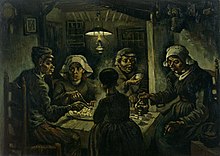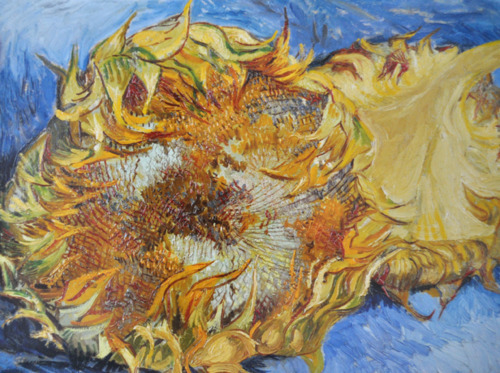Mentor Mondays presents . . . Vincent Van Gogh
I recently went to see The Philadelphia Museum of Art’s exhibit, “Van Gogh: Up Close”. It’s an exhibit focusing on the work from the last 4 years of Van Gogh’s life, and especially the works that were zoomed in, cropped, and influenced by Japanese Prints and nature photography.
I found it to be an excellently curated and narrated exhibit that displayed his work while explaining some of the historical events that influenced how he was able to create work at that time. As many people know, Van Gogh eventually went to the South of France, was placed in a mental institution at one point, and eventually died of a shot to the chest (or stomach, some people report it differently.) Most people assume he shot himself. For me, it’s not so much how he died, but how he lived.
Van Gogh started out painting in the Netherlands and focused primarily on the poor and desolate, portraits made with dark blues and grays. Paintings like the Potato Eaters, 1885

He eventually moved into brighter colors, but none so bright as when he was exposed to the light and fields of Southern France.
This is what Up Close celebrates. Van Gogh’s attention to detail, he sense of color, his ability to abstract while embracing texture is just a few of the reasons he is one of my favorite artists.
Like in his painting, Sunflowers, 1887:

His ability to give texture, while blurring the background to focus our eye on the curved and linear details inside the dying sunflower. It’s the way a photographer moves a viewers eye, and Van Gogh is able to wield this ability in a unique and novel way.
Some other works of his that I enjoyed at the show:

But for me, the most moving piece, and the closing piece in this show is Almond Blossom, 1890. A piece he did for his nephew and namesake.

It’s a breathtaking piece, and one you really have to see in person to truly appreciate. For me, it struck me for many reasons. The most noticeable, at the time I saw it, was the fact that it’s the only piece that isn’t grounded. In fact, it’s the only piece I’ve seen of Van Gogh’s where the perspective is to look up. It, in my opinion, is his most joyful, most hopeful work.
If you liked these, I highly recommend you see the show. If you want to learn more about Van Gogh, I’d suggest reading Lust for Life by Irving Stone an excellent work based on the letters involved in Van Gogh’s life that tell his story from his brother, to Gauguin, to Van Gogh himself’s perspective.
As an added bonus, I wanted to mention one of my favorite scenes from the show, Dr. Who.
In a scene, Dr. Who takes Van Gogh to see his own show and to hear, from an expert, just what Van Gogh’s impact was on art, and the world.
“He transformed the pain of his tormented life into ecstatic beauty. Pain is easy to portray, but to use your passion and pain to portray the ecstasy and joy of our world, no one had ever done it before.”
While it may be a fictional moment, it is one of the most poignant scenes I’ve watched on TV.

